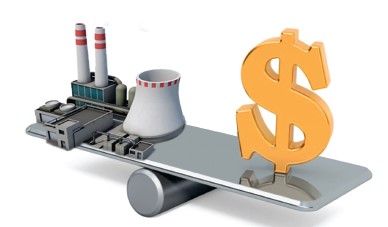Nuclear power has clear benefits as a net-nothing power alternative, but when it comes to depressed element warming, it is the clear number one. Space and water warming give the reason for almost half of all energy demand for houses and provided about 2450 heap tonnes of direct CO2 diffusions in 2021. Although hydrocarbon deposits still meet over 60% of warming necessities, finding a reduced-element alternative is important to meet Net Zero hope.
Nuclear power has continually happened a point of controversy, but accompanying the increasing need to weaken element issuances and obtain net nothing targets, it should progressively appealing
answer for many nations, specifically in Asia. With the power requirements projected to evolve considerably in the coming age, nations like China, India, and Japan are curving to radioactive energy sources as a clean, trustworthy, and economical solution to meet their strength needs. This feature will investigate the reason nuclear energy is a clear first in major computer network-nothing story in Asia and allure potential to transform the domain’s strong countryside.
Firstly, nuclear energy is a clean beginning of energy that produces practically no hothouse vapour diffusions. Unlike hydrocarbon deposits like bitumen and vapour, nuclear energy plants do not
emit colourless odorless gas or different hurtful contaminants into the air. This creates nuclear energy an attractive alternative for nations to lower their element footmark and meet their assurances under the Paris Agreement. The International Energy Agency (IEA) has identified nuclear energy as one of the key sciences wanted to reach net nothing diffusions by 2050.
Secondly, nuclear power is the confidential information of strength that can specify a constant supply of power to meet the increasing demand in Asia. Nuclear energy can be used continuously,
offering a consistent and reliable source of power, unlike energy from renewable sources like the wind and sun. This is specifically important for nations that have knowing capacity shortages and blackouts earlier. For example, nuclear energy accounts for roughly 3% of India’s electricity generation, but it also provides resistant and confidential information on baseload capacity.
Thirdly, a radioactive energy source is an economical solution that can help to lower the cost of power in Asia. While the straightforward capital costs of constructing an atomic reactor are extreme, the money needed to run a business is nearly low distinguished to different forms of strength. These resources that radioactive energy source can specify an inexpensive source of power in the unending, specifically as the cost of energy from un depletable sources resumes to fall. Furthermore, many nations in Asia are densely reliant on exotic nonrenewable energy, which may be high-priced and liable to be subjected to price excitability. Nuclear power can provide a household beginning of strength namely invulnerable to vacillations in all-encompassing strength markets.
However, it is important to accept the potential risks and challenges that guide nuclear energy. Safety concerns, waste administration, and basic increase are all issues that must be talked about to ensure that radioactive energy source is a secure and tenable answer for the future. The Fukushima trouble in Japan in 2011 emphasise the potential risks guiding nuclear power, and many nations
have achieved more absolute security requirements and upgraded emergency answer plans. Similarly, persuasive waste administration approaches are wanted to guarantee that environmental pollutant is harmlessly stored and does not pose a warning to human fitness or the surroundings.
District warming and linked heat and capacity are famous approaches to improve strength adeptness and humble element impact, but the rude answer has existed slowly in a few regions. China is chief in the habit of cultivating basic-stimulate warming networks. The country’s best basic heating network to date, Warm-U-Clear-1, was instructed in November 2022, and the 900 MW Phase III is afoot.
According to enumerations, the basic warming approach has earlier prevented some 420,000 tonnes of direct CO2 issuances.
Although the use of nuclear energy for precinct warming is still in allure babyhood, it presents an important opportunity to decarbonise a big beginning of diffusions. Europe now leads the experience in clean strength unification in district warming, accompanying about 25% of commune heat provided from inexhaustible beginnings. Leading this effort are nations like Sweden and
Lithuania, both of which have a compliant nuclear energy strategy. With renewed interest in basic volume due to worries about the security of the energy supply, it is obvious that the world must
examine every option to reduce allure element emissions, and basic warming is an unavoidable choice.
Even for India, achieving net-zero emissions outside of nuclear energy within her capacity will be impossible. By 2030, India plans to generate 500 GW of energy from non-depletable sources and
meet half of its energy needs from these sources on an annual basis. However, a deliberate and comprehensive integration of renewable energy sources into the gridiron would raise two issues:
grid security and power costs.






